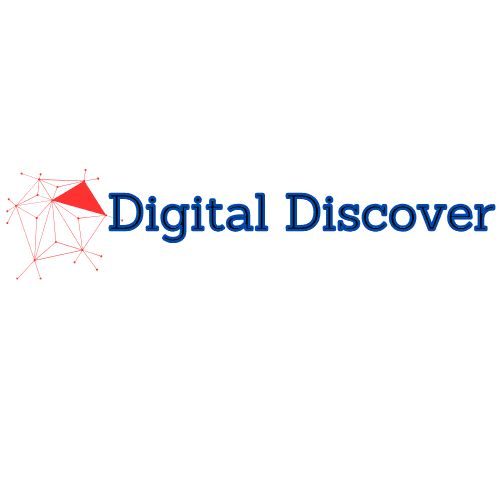In today’s fast-paced, tech-driven world, digital platforms have emerged as a cornerstone of modern commerce and communication. From e-commerce and social media to education and healthcare, these platforms are reshaping how we interact, conduct business, and access services. This blog aims to explore the significance of digital platforms, their impact across various sectors, and the future trends we can anticipate.

What is a Digital Platform?
A digital platform is an online framework where individuals or businesses can create, connect, and exchange value. They enable the interaction between multiple users—be it consumers, producers, or service providers—facilitating a seamless flow of information and transactions. Common examples include social media giants like Facebook, e-commerce platforms like Amazon, and service-oriented platforms like Uber and Airbnb.
The Significance of Digital Platforms
Accessibility and Convenience
Digital platforms have made services more accessible than ever before. Consumers can now purchase goods, book services, and connect with others from the comfort of their homes. This convenience has redefined shopping behavior, leading to a massive shift towards online commerce.
Enhanced Connectivity
These platforms connect a global audience, breaking down geographical barriers. Businesses can now reach potential customers anywhere in the world, and individuals can collaborate across borders. This connectivity fosters innovation and collaboration on an unprecedented scale.
Data-Driven Insights
Digital platforms collect vast amounts of data, offering businesses and organizations valuable insights into consumer behavior and preferences. Companies can leverage this data to tailor products and services, enhancing customer satisfaction and driving sales.
Cost-Effectiveness
For businesses, using digital platforms can drastically reduce operational costs. By minimizing the need for physical storefronts and leveraging online tools for marketing and communication, companies can operate more efficiently and allocate resources to areas that drive growth.
Impact Across Industries
E-commerce
One of the most visible impacts of digital platforms has been in e-commerce. Platforms like Amazon and eBay have revolutionized how we shop, providing vast selections, competitive pricing, and the convenience of home delivery. Small businesses can also easily set up online storefronts, leveling the playing field.
Education
Digital platforms are reshaping education through online learning environments and resources. Platforms like Coursera, Udemy, and Khan Academy allow individuals to learn at their own pace, democratizing access to education and enabling lifelong learning.
Healthcare
In healthcare, platforms are streamlining patient care and enhancing access to medical services. Telehealth platforms have gained popularity, allowing patients to consult with healthcare professionals remotely, especially important during the COVID-19 pandemic.
Transportation
Ride-sharing services like Uber and Lyft exemplify how digital platforms can disrupt traditional industry models. By connecting drivers with passengers through a user-friendly app, these services have transformed urban transportation, making it more efficient and accessible.
Challenges and Considerations
While digital platforms offer numerous benefits, they also come with challenges. Issues of data privacy and security are paramount, as users share personal information and payment details. Regulatory scrutiny is increasing, and businesses must navigate the complex landscape of compliance.
Moreover, the dominance of major digital platforms raises concerns about monopolistic practices and the treatment of users and providers. Ensuring fair competition and protecting the interests of smaller players will be crucial as we move forward.
Future Trends
As we look to the future, several trends are emerging in the realm of digital platforms:
- Artificial Intelligence (AI): The integration of AI will enhance user experience through personalized recommendations and improved customer service via chatbots.
- Blockchain Technology: This could enable more secure and transparent transactions, particularly in industries like finance and supply chain management.
- Integration of Augmented Reality (AR) and Virtual Reality (VR): These technologies will offer immersive experiences in e-commerce, education, and training.
- Sustainability: As consumers become more environmentally conscious, platforms will likely evolve to prioritize sustainable practices and transparency in sourcing.
How to Maximize the Use of Digital Platforms
Maximizing the use of digital platforms requires a strategic approach that considers your specific goals, target audience, and the nature of the platform itself. Here are several tips to help you get the most out of digital platforms across various domains:
1. Identify Your Objectives
- Set Clear Goals: Determine what you want to achieve—be it increasing brand awareness, generating leads, boosting sales, or enhancing customer engagement.
- Measure Success: Establish key performance indicators (KPIs) to assess the effectiveness of your efforts on the platform.
2. Know Your Audience
- Conduct Research: Understand your audience’s demographics, preferences, and behavior on the platform you choose to engage with.
- Create Buyer Personas: Develop detailed profiles of your ideal customers to tailor your content and marketing strategies to their needs.
3. Optimize Your Profile
- Complete Your Profile: Ensure that your profile or page on the platform is fully completed with relevant information, images, and a clear description of your offerings.
- Use SEO Best Practices: Incorporate relevant keywords and optimize your content for search engines to improve visibility and discoverability.
4. Engage with Content
- Share Quality Content: Provide valuable, informative, and entertaining content that resonates with your audience, whether it be articles, videos, images, or podcasts.
- Be Consistent: Regularly update your content to keep your audience engaged and encourage them to return.
5. Utilize Paid Advertising
- Explore Ad Options: Many platforms offer targeted advertising options that can help you reach specific demographics. Invest in paid ads to boost your visibility.
- A/B Test Your Ads: Experiment with different ad formats, messaging, and targeting options to determine what works best for your audience.
6. Leverage Data and Analytics
- Use Analytics Tools: Utilize the analytical tools provided by digital platforms to track performance metrics and user engagement.
- Adjust Strategies: Use insights from analytics to refine your content strategy, targeting, and overall approach based on what is working or not.
7. Encourage Engagement and Interaction
- Foster Community: Encourage conversations, comments, and discussions to build a community around your brand or offerings.
- Respond Promptly: Engage with followers by responding to comments, messages, and inquiries in a timely manner.
8. Collaborate with Influencers
- Identify Key Influencers: Partner with influencers who resonate with your target audience to broaden your reach and enhance credibility.
- Create Authentic Content: Work with influencers to create authentic and engaging content that reflects both your brand and their style.
9. Utilize Cross-Promotion
- Integrate Across Platforms: Share your content across different digital platforms to maximize reach and build a cohesive online presence.
- Link Back to Your Website: Use your digital platform presence to drive traffic back to your website or other digital properties.
10. Stay Updated with Trends
- Monitor Industry Trends: Keep an eye on emerging trends and technologies within digital platforms that can enhance your strategy.
- Adapt Quickly: Be willing to pivot your approach based on new information, platform updates, or shifts in consumer behavior.
11. Invest in Training and Tools
- Digital Skills Training: Invest in training for yourself and your team to enhance your digital marketing skills.
- Use Tools and Software: Leverage tools for scheduling posts, managing content, and analyzing performance to streamline your efforts.
12. Maintain Ethical Standards
- Prioritize Transparency: Maintain honesty and transparency in your communications, especially concerning data usage and privacy policies.
- Build Trust: Engage ethically to cultivate trust and long-term relationships with your audience.
By employing these strategies, you can maximize the use of digital platforms not only to drive business outcomes but also to build lasting connections with your audience. Digital platforms offer immense potential, and a thoughtful approach can help unlock new opportunities for growth and engagement.
Here are some examples of popular digital platforms across various categories:
E-commerce Platforms
- Amazon: The largest online marketplace, offering a vast array of products and services, including Prime memberships for expedited shipping and exclusive content.
- eBay: An online auction and shopping website where individuals and businesses can buy and sell new and used items.
- Etsy: A marketplace focused on handmade, vintage items, and craft supplies, providing exposure for independent creators.
Social Media Platforms
- Facebook: A social networking site where users can create profiles, share content, and connect with friends and communities.
- Instagram: A visual platform that emphasizes photo and video sharing, often used for personal branding and marketing.
- LinkedIn: A professional networking site aimed at career development, job searching, and industry networking.
Ride-Sharing and Transportation Platforms
- Uber: A ride-hailing service that connects drivers with passengers through a smartphone app.
- Lyft: A competitor to Uber, offering similar services for ride-sharing and transportation.
- Zipcar: A car-sharing service that allows users to rent cars by the hour or day, offering flexibility for urban transport.
Streaming and Entertainment Platforms
- Netflix: A streaming service that offers a wide range of films, television series, documentaries, and original content.
- Spotify: A music streaming platform that provides access to millions of songs and podcasts through subscription and ad-supported tiers.
- YouTube: A video-sharing platform where users can upload, share, and view videos, as well as engage with content creators.
Online Learning Platforms
- Coursera: An online education platform that offers courses, specializations, and degrees from universities and institutions worldwide.
- Udemy: A marketplace for learning and teaching online, featuring courses on various topics from expert instructors.
- Khan Academy: A free educational platform providing instructional videos and learning resources on a wide range of subjects.
Healthcare Platforms
- Teladoc Health: A telehealth platform that connects patients with healthcare providers for virtual consultations.
- Zocdoc: A service that allows users to find doctors and book appointments online, often with reviews and ratings.
- MyFitnessPal: A mobile app that helps users track their diet and exercise, connecting them with health and fitness communities.
Cloud Computing and Collaboration Platforms
- Google Drive: A cloud storage service that allows users to store files online and collaborate on documents in real-time.
- Microsoft 365: A cloud-based suite that includes tools like Word, Excel, and Teams for collaboration and productivity.
- Slack: A collaboration platform designed for teams to communicate via channels, share files, and integrate with various applications.
Fintech Platforms
- PayPal: An online payment platform that facilitates transactions between shoppers and businesses, making online payments secure and easy.
- Robinhood: A stock trading app that democratizes investing by allowing users to trade stocks and cryptocurrencies without commission fees.
- Square: A payment processing platform offering businesses the tools to accept payments, manage sales, and track inventory.
These examples highlight the diverse applications of digital platforms across different industries, showcasing their role in transforming the way we interact, shop, learn, and conduct business.
FAQs on Maximizing Digital Platforms
- What are the most important goals to set for digital platforms?
- Focus on goals like increasing brand awareness, generating leads, boosting sales, and enhancing customer engagement.
- How do I understand my target audience?
- Conduct market research, develop buyer personas, and analyze demographics and behavior on the platforms.
- Why is optimizing my profile important?
- A complete and optimized profile enhances visibility and helps convey your brand’s message effectively to visitors.
- What type of content should I share?
- Share high-quality, relevant, and engaging content such as articles, videos, and infographics that your audience will find valuable.
- Should I invest in paid advertising?
- Yes, paid advertising can help target specific demographics and amplify your reach more effectively, especially for business goals.
- How can I track the effectiveness of my efforts?
- Use the analytics tools available on platforms to monitor key performance metrics, such as engagement rates and conversion rates.
- What is the best way to engage with my audience?
- Encourage conversations, respond to comments promptly, and foster a sense of community around your brand.
- How can I leverage influencer collaborations?
- Partner with influencers who align with your brand and have an audience that matches your target demographic for authentic promotion.
- What tools can help streamline my efforts?
- Use scheduling tools, analytics software, and content management systems to efficiently manage your digital presence.
- Why is staying updated with trends important?
- Keeping up with trends helps you adapt quickly and remain relevant in a rapidly evolving digital landscape.
- How can I ensure ethical practices?
- Be transparent with your audience about data usage, privacy policies, and engage with honesty to build trust.
These FAQs address common questions and provide quick answers for anyone looking to enhance their use of digital platforms.
Conclusion
Digital platforms are undoubtedly transforming our world, reshaping how we connect, do business, and access information. As they continue to evolve, understanding their impact and navigating the associated challenges will be essential for businesses and individuals alike. Embracing this digital landscape not only presents opportunities for growth but also paves the way for innovative solutions to complex problems. The future is digital, and it’s an exciting journey that we are all a part of.



